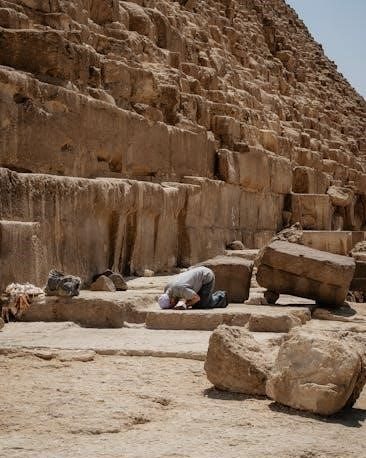Muslim history began in 610 CE with Prophet Muhammad’s revelations, shaping a global religion. The Hijrah, Rashidun Caliphate, and Islamic expansion transformed societies, leaving a lasting legacy.
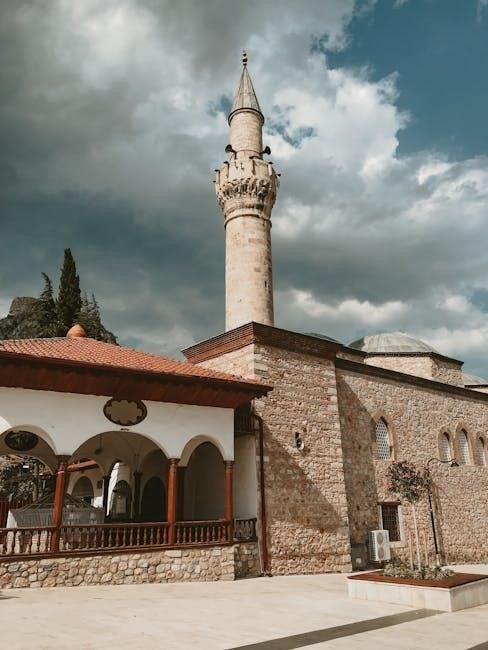
The Origin of Islam in 610 CE
In 610 CE, Prophet Muhammad received his first revelation from Allah through Angel Gabriel in a cave near Mecca. This marked the beginning of Islam. At 40 years old, Muhammad was entrusted with divine messages, starting with the command to “Recite.” Initially, he shared his revelations with close family and friends, but by 613 CE, he began preaching publicly. This period laid the foundation for Islam, transforming Muhammad from a revered local figure into the Prophet of a global faith, with teachings that would reshape human history.
The Life of Prophet Muhammad and His Revelations
Prophet Muhammad, born in 570 CE, received his first revelation at 40 years old in 610 CE. Initially, he doubted his experience but was reassured by his wife Khadijah. Over 23 years, he received divine revelations through Angel Gabriel, compiling the Quran. His message emphasized the oneness of God, moral guidance, and social justice. Despite facing opposition, Muhammad’s teachings transformed Arabia, uniting tribes under Islam. His life exemplified compassion, wisdom, and leadership, shaping the foundation of Muslim faith and practice, and earning him the title of the Seal of the Prophets.
The Spread of Islam in the Arabian Peninsula
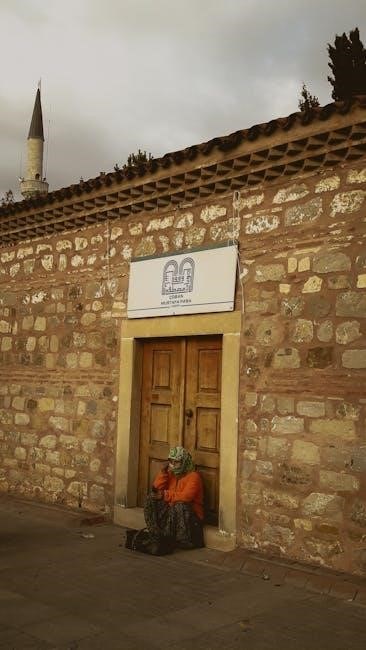
Islam spread rapidly across Arabia after the Hijrah in 622 CE. Prophet Muhammad’s teachings unified warring tribes under a shared faith. The Conquest of Mecca in 630 CE marked a pivotal moment, solidifying Islam’s dominance. By 632 CE, most of Arabia had embraced Islam, transforming tribal loyalties into a unified religious identity. This period laid the foundation for Islam’s expansion beyond Arabia, creating a cohesive Muslim community ready to carry the message of monotheism and moral guidance to the wider world.
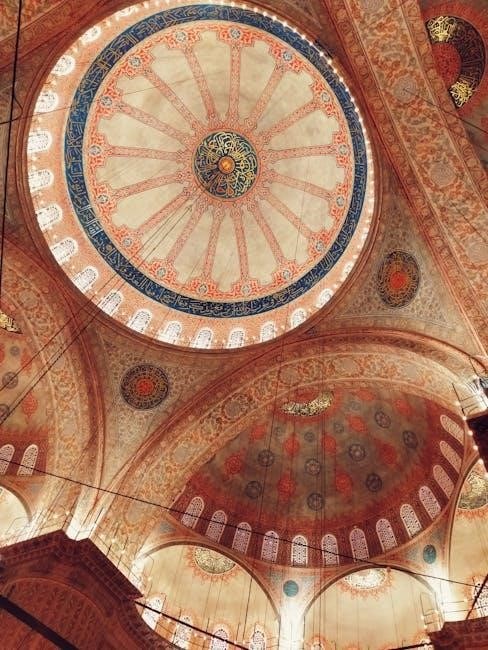
The Early Expansion of Islam
Following the Hijrah, Islam expanded rapidly under the Rashidun Caliphate. Military campaigns and strategic alliances led to the conquest of Persia and the Levant, spreading Islamic influence widely.
The Hijrah and the Establishment of the First Muslim Community
The Hijrah, or migration, of Prophet Muhammad from Mecca to Medina in 622 CE marked a pivotal moment in Muslim history. This event established the first Muslim community, providing a safe haven for believers to practice their faith. The Hijrah also initiated the Islamic calendar and laid the foundation for a society governed by Islamic principles. It symbolized resilience and divine guidance, setting the stage for the spread of Islam and the creation of a unified Muslim identity.
The Conquests of the Rashidun Caliphate
The Rashidun Caliphate, following Prophet Muhammad’s death, expanded Islam rapidly. Under Caliph Umar, Muslim armies conquered the Persian Empire, culminating in the decisive Battle of Nihavand in 642 CE. This victory, known as the “Conquest of Conquests,” led to the fall of the Sassanian Empire. The Rashidun forces also triumphed over the Byzantine Empire, capturing key territories like Syria and Egypt. These military successes, driven by strategic brilliance and religious zeal, solidified Islam’s presence in the region and laid the groundwork for a vast Islamic empire.
The Battle of Nihavand and the Fall of the Persian Empire
The Battle of Nihavand in 642 CE marked the final collapse of the Sassanian Persian Empire. Known as the “Conquest of Conquests,” it sealed Persia’s fate under Muslim rule. The Rashidun Caliphate’s victory, led by General Nu’man ibn Muqrin, demonstrated superior military strategy and coordination. This triumph opened Persia to Islamic influence, reshaping its culture and religion. The fall of the Persian Empire solidified Islam’s dominance in the region, paving the way for further expansion and cultural integration across the Middle East.
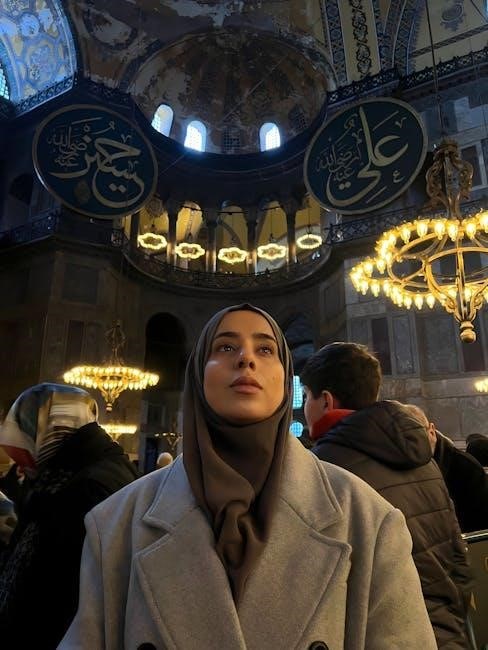
The Golden Age of Islam
The Abbasid Caliphate fostered a cultural and scientific renaissance, advancing mathematics, medicine, and astronomy. Scholars preserved ancient knowledge, translating Greek and Roman texts, enriching global intellectual heritage.
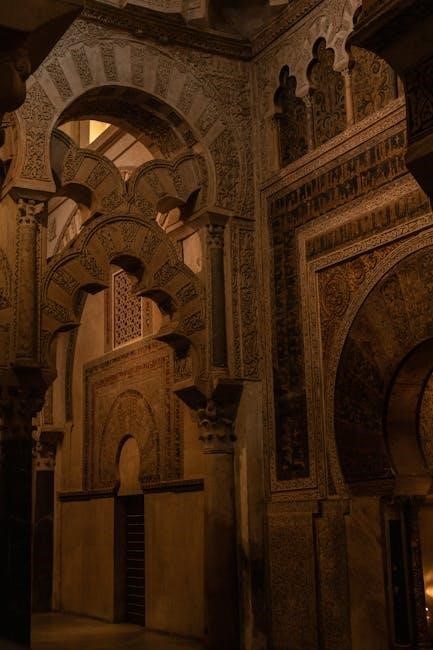
The Abbasid Caliphate and Its Cultural Achievements
The Abbasid Caliphate, reigning from 750 to 1258 CE, marked Islam’s Golden Age. It established Baghdad as a hub of learning, where scholars translated ancient Greek, Persian, and Roman texts into Arabic, preserving knowledge. This period saw advancements in mathematics, astronomy, and medicine, with figures like Al-Khwarizmi pioneering algebra. The caliphate promoted intellectual exchange, fostering a multicultural environment that enriched global scholarship and laid the foundation for later scientific and cultural developments across the world.
Scientific and Intellectual Contributions of Muslim Scholars
Muslim scholars made groundbreaking contributions to science, medicine, and philosophy during the Islamic Golden Age. Figures like Al-Khwarizmi pioneered algebra, while Ibn Sina’s medical texts remained authoritative for centuries; Al-Biruni’s advancements in astronomy and geography set new standards. Scholars preserved and expanded ancient knowledge, translating Greek and Persian works into Arabic. Their discoveries in optics, mathematics, and chemistry laid the foundation for later scientific revolutions, influencing scholars worldwide and shaping the course of human understanding for centuries to come.
The Preservation and Translation of Ancient Knowledge
Muslim scholars played a pivotal role in preserving and translating ancient texts, particularly from Greek and Persian traditions. The House of Wisdom in Baghdad became a hub for translation, safeguarding works on philosophy, medicine, and science. Scholars like Hunayn ibn Ishaq translated key texts into Arabic, ensuring their survival for future generations. This effort not only preserved knowledge but also facilitated its spread across the Islamic world and beyond, laying the groundwork for the Renaissance and Enlightenment in Europe.
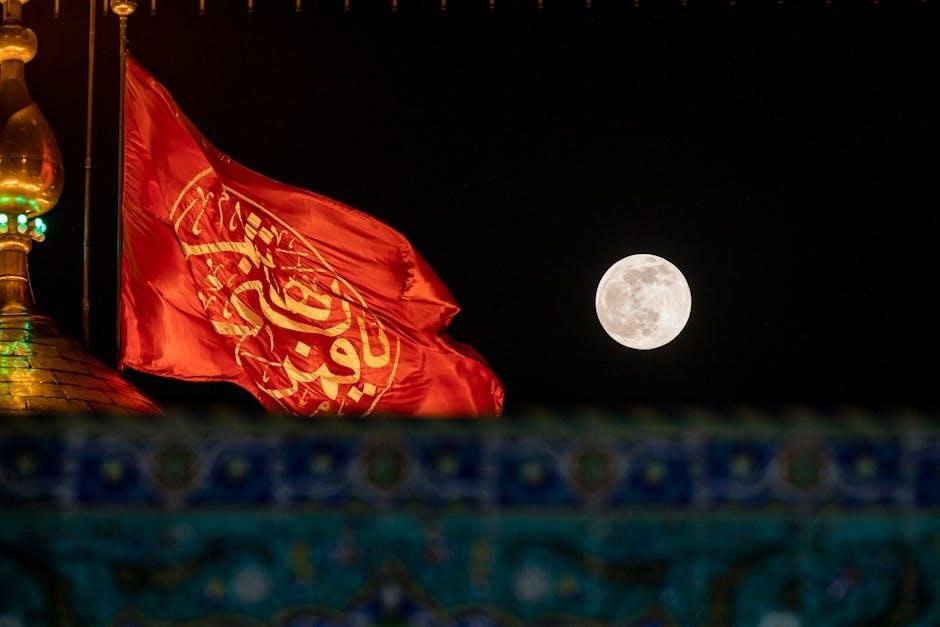
Key Figures in Muslim History
Prophet Muhammad, the Four Rightly Guided Caliphs, Imam Ali, and Saladin are central figures, shaping Islam’s spiritual and political landscape through their leadership and legacy.
The Four Rightly Guided Caliphs
The Four Rightly Guided Caliphs—Abu Bakr, Umar, Uthman, and Ali—were the first leaders of the Muslim community after Prophet Muhammad. Renowned for their piety and wisdom, they expanded Islam’s influence, established governance, and upheld justice. Their caliphates marked a golden era of unity and prosperity, setting the foundation for Islamic civilization. Each caliph faced unique challenges, from consolidating power to managing vast territories, but their leadership remains a cornerstone of Muslim history and a model for ethical governance.
The Role of Imam Ali and the Shia-Sunni Divide
Imam Ali, cousin and son-in-law of Prophet Muhammad, played a pivotal role in Muslim history. His caliphate sparked the Shia-Sunni divide, as some Muslims supported his leadership while others backed his rivals; The Battle of Karbala, where his son Hussein was martyred, deepened the rift. Shia Muslims revere Ali as the rightful successor, while Sunnis view him as one of the Four Rightly Guided Caliphs. This division shaped Islamic identity, influencing theology, politics, and culture, leaving a lasting impact on the Muslim world.
Saladin and the Defense of Jerusalem
Saladin, a renowned Muslim leader, played a pivotal role in defending Jerusalem during the Crusades. His leadership united Muslim forces, culminating in the Battle of Hattin in 1187, which decisively defeated the Crusaders. Saladin’s victory restored Muslim control over Jerusalem, symbolizing a triumph of faith and unity; His chivalry and mercy, even toward enemies, earned him respect across cultures. Saladin’s legacy endures as a hero of Islamic history, embodying courage, strategic brilliance, and a commitment to justice, leaving a lasting impact on Muslim-Christian relations and the medieval world.
Major Events in Muslim History
Key events include the Hijrah, Rashidun Caliphate conquests, and the Battle of Nihavand, shaping Islamic expansion and legacy across centuries.
The Battle of Karbala and Its Significance
The Battle of Karbala, occurring in 680 CE, marked a pivotal moment in Muslim history. It resulted in the martyrdom of Imam Al-Husayn, grandson of Prophet Muhammad, and his followers. This event deepened the Shia-Sunni divide, symbolizing resistance against tyranny. The battle is commemorated annually during Ashura, reflecting its enduring emotional and spiritual impact on Muslims worldwide.
The Crusades and Muslim-Christian Relations
The Crusades (late 11th to late 13th century) were a series of military campaigns initiated by Christian leaders to reclaim the Holy Land from Muslim rule. These conflicts intensified religious tensions and violence between Muslims and Christians. The sieges of Jerusalem and Acre exemplified the bloodshed and animosity of the era. Despite the violence, the Crusades also facilitated cultural exchanges, as Muslim and Christian scholars interacted, preserving and translating knowledge. This period remains a complex chapter in Muslim-Christian relations, marked by both conflict and intellectual exchange.
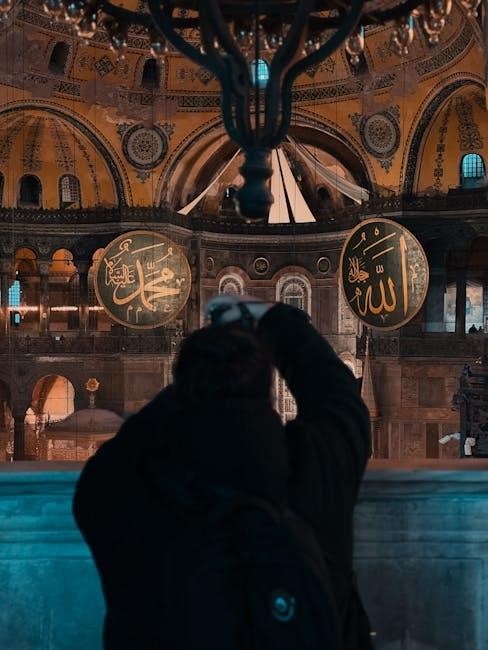
The Mongol Invasions and Their Impact on Muslim Civilizations
The Mongol invasions of the 13th century devastated Muslim civilizations, particularly the Abbasid Caliphate. In 1258, Baghdad was sacked, marking the caliphate’s fall. Cities like Samarkand and Bukhara were destroyed, disrupting trade and cultural hubs. The Mongols’ brutality caused widespread death and economic collapse. However, over time, some Mongol rulers converted to Islam, integrating into Muslim societies and influencing regional politics. This period reshaped the Islamic world, leaving lasting scars but also fostering new cultural and political dynamics in the aftermath of the invasions.
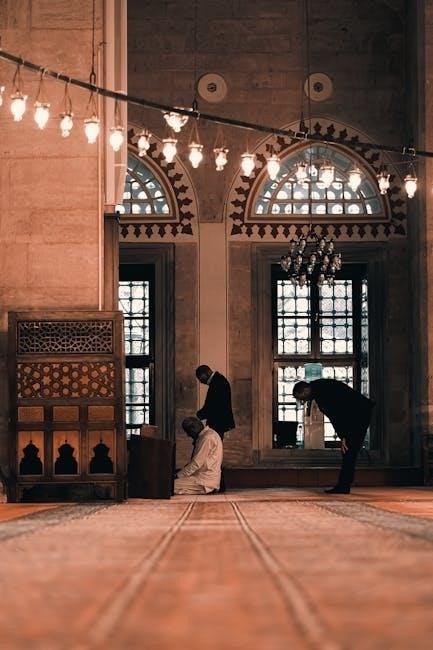
The Rise and Fall of Muslim Empires
The Abbasid Caliphate’s decline led to the rise of regional Muslim empires. The Ottomans and Mughals flourished, achieving cultural and military zeniths before facing internal strife and external pressures.
The Ottoman Empire and Its Legacy
The Ottoman Empire, founded by Osman I in the 13th century, expanded into a vast empire covering parts of three continents. It became a center of political, military, and cultural power, known for its administrative efficiency and architectural achievements. The empire’s decline began in the 19th century, facing internal decay and external pressures. Its legacy includes significant contributions to art, science, and law, shaping modern Turkey and influencing regions under its rule. The empire’s dissolution after World War I marked the end of a centuries-long Islamic imperial era.
The Mughal Empire in India
The Mughal Empire, established by Babur in 1526, flourished in India until the 18th century. Under Akbar, it reached cultural heights, blending Persian, Indian, and Islamic traditions. The Taj Mahal, built by Shah Jahan, remains a testament to its architectural prowess. The empire’s decline began with internal strife and external pressures, including the Maratha uprising and British expansion, leading to its eventual dissolution.
The Decline of the Abbasid Caliphate
The Abbasid Caliphate’s decline began in the 10th century, marked by political instability and financial strain. Regional dynasties and internal conflicts eroded central authority. External pressures, including the Seljuk Turks and Mongol invasions, further weakened the empire. The Mongols’ sack of Baghdad in 1258 effectively ended Abbasid rule. The caliphate lingered in Egypt until 1517 but lost its political and cultural dominance. This period marked the end of a once-thriving empire that had shaped Islamic civilization. Its decline significantly impacted Islamic political and cultural structures, leading to a fragmented Muslim world.
Muslim History in the Modern Era
Muslim history in the modern era includes significant events like the Iranian Revolution and the creation of Pakistan, shaping contemporary Muslim identity and global interactions.
The Partition of India and the Creation of Pakistan
The Partition of India in 1947 marked a pivotal moment in Muslim history, leading to the creation of Pakistan as a Muslim-majority state. This division, based on religious lines, followed decades of nationalist movements and communal tensions. The partition resulted in widespread violence, displacement, and a profound reshaping of identities. Pakistan’s establishment was seen as a realization of the Two-Nation Theory, which posited that Hindus and Muslims constituted distinct nations. This event significantly influenced modern Muslim history, shaping political, cultural, and religious dynamics in the region.
The Iranian Revolution and Its Global Impact
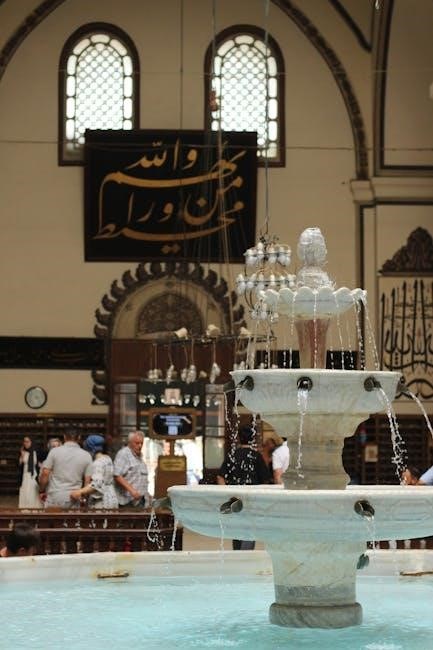
The Iranian Revolution of 1979, led by Ayatollah Khomeini, overthrew the Shah, establishing an Islamic Republic. This event reshaped Iran’s political and cultural landscape, inspiring global Muslim movements. It sparked widespread interest in Islam, prompting new discussions on religion, politics, and identity. The revolution’s impact extended beyond Iran, influencing Muslim communities worldwide and challenging Western perceptions of Islam. It remains a pivotal moment in modern Muslim history, symbolizing the resurgence of Islamic ideology in the late 20th century.
Contemporary Challenges and Opportunities for Muslims
Modern Muslims face challenges like discrimination, political tensions, and social inequalities. However, they also have opportunities to engage in global dialogue, technological advancement, and cultural exchange. The digital age has enabled Muslims to share their narratives, fostering understanding and unity. Education and interfaith collaboration are key to addressing misconceptions and promoting peace. Additionally, the growth of Islamic thought in diverse contexts offers chances for innovation and adaptation, ensuring Islam remains relevant in a rapidly changing world while preserving its core values and traditions.
The Spread of Islam Beyond Arabia
Islam expanded through trade, migration, and missionary efforts, reaching Africa, Spain, and Southeast Asia. Cultural integration and tolerance facilitated its adoption, shaping diverse Muslim communities globally.
Islam in Africa and Its Cultural Adaptations
Islam spread to Africa through trade routes and migration, blending with local cultures. Sufism played a key role in its adoption, emphasizing spiritual connection. African Muslims integrated Islamic practices with traditional customs, creating unique cultural expressions. This synthesis is evident in art, architecture, and daily life, fostering a vibrant Muslim identity across the continent. The adaptability of Islam in Africa highlights its universal appeal while respecting regional traditions, ensuring its enduring presence and influence.
The Islamic Golden Age in Spain
The Islamic Golden Age in Spain, known as Al-Andalus, flourished from the 8th to the 13th century. It was a period of remarkable cultural, scientific, and intellectual advancement. Muslim scholars made groundbreaking contributions to mathematics, astronomy, medicine, and philosophy. Figures like Al-Khwarizmi and Ibn Rushd influenced global knowledge. The region became a hub for preserving and translating ancient texts, fostering a vibrant intellectual environment. This era exemplified the synthesis of Islamic, Jewish, and Christian traditions, creating a unique cultural legacy that shaped both the Islamic world and beyond.
The Spread of Islam in Southeast Asia
Islam spread to Southeast Asia through trade and cultural exchanges, beginning in the 13th century. Arab and Indian merchants introduced Islamic teachings, blending with local customs. Sufism played a key role, making Islam relatable. By the 15th century, kingdoms like Malacca embraced Islam, becoming centers for further spread. The faith integrated with indigenous traditions, creating a unique Islamic culture. This period saw the rise of influential Islamic scholars and the establishment of sultanates, shaping the region’s identity and leaving a lasting legacy in modern nations like Indonesia and Malaysia.
